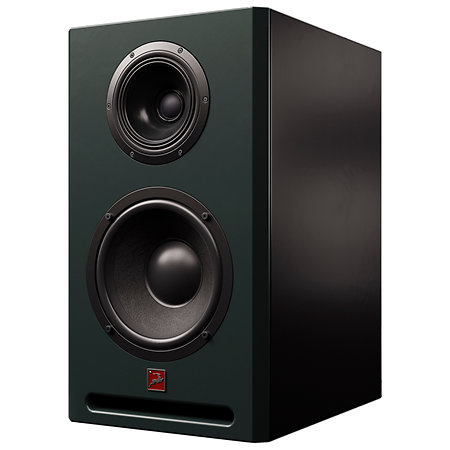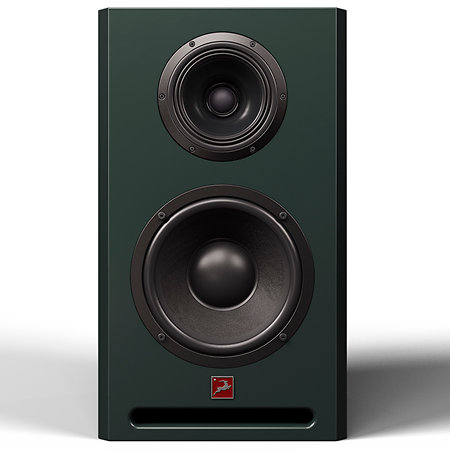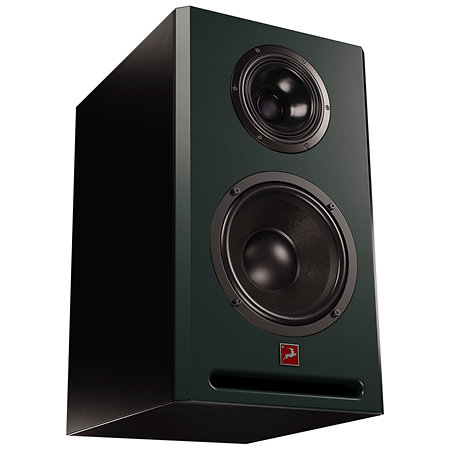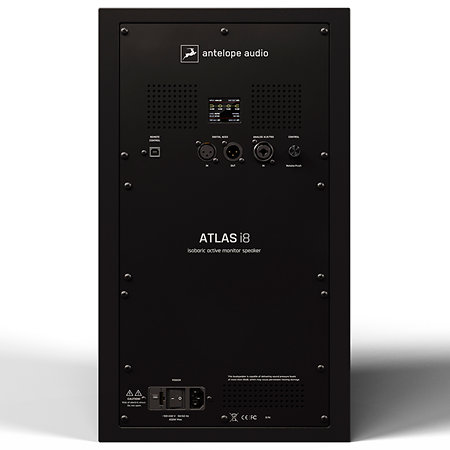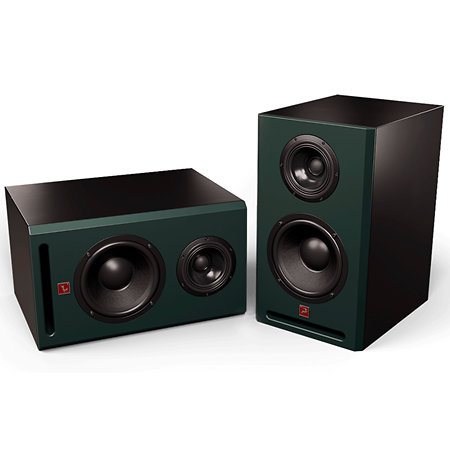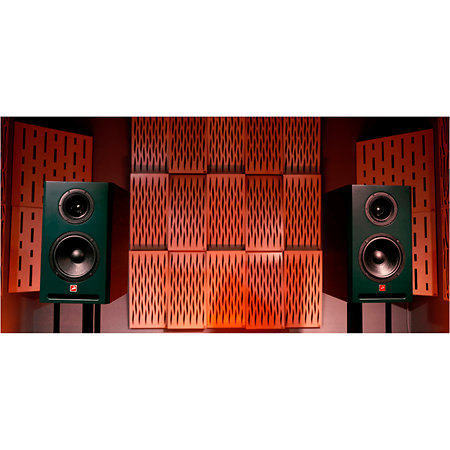Antelope Audio - Atlas i8
Antelope Atlas i8, 400 W active studio monitor on 3 channels with analog and AES EBU digital inputs and outputs. The bass is managed by 2 8" woofers in isobaric configuration and the mids & treble are delivered by a coaxial speaker.
Specifications
-
Antelope Audio Atlas i8
-
Two identical 8-inch sealed woofers in isobaric configuration (200W)
-
Coaxial speaker for midrange (100W) and treble (100W)
-
Total amplification power of 400W (Class D)
-
Frequency response: 35 to 20,000 Hz
-
Max SPL: 117 dB SPL (at 1m)
-
AES/EBU digital input and output
-
Sampling frequency: 192 kHz
-
64-bit AFC technology
-
Factory-calibrated FIR and IIR filters
-
Color control screen on the back
-
Color: dark green
Presentation
This is a 3-way monitoring speaker with 400 W of class D amplification in total, equipped with 2 identical 8-inch woofers (speakers) that are sealed in an isobaric configuration, one behind the other, offering a powerful and clean low frequency response. Thanks to the isobaric design, the size of the cabinet is significantly reduced, the efficiency is improved and the bass performance and a reduction in distortion..
With the Atlas i8, the Bulgarian manufacturer claims to have achieved a neutral and flat frequency response, as well as phase linearity, which translates into a dynamic, clear and precise sound. A proprietary digital signal processing technology with FPGA chips has been designed to implement FIR and IIR filters, allowing for a deep and focused stereo image.
A single-axis coaxial driver design handles the mid and high bands, eliminating potential comb-filtering effects and allowing for both horizontal and vertical positioning.
AFC (Adaptive Frequency Control) is a precision digital technology. A single-axis coaxial driver design is used to handle the mid and high frequency bands, eliminating potentially damaging comb-filtering effects and allowing for both horizontal and vertical positioning.
Premium Amplification:
The specially designed Class-D amplifier with ultra-low total harmonic distortion (THD), designed exclusively for the ATLAS i8, powers the 8-inch drivers with 200W, the midrange with 100W and the highs with 100W to ensure high and substantial SPL performance.
A full-color display with a rotary dial provides easy access to the speaker's main parameters. You can easily adjust volume, routing and EQ presets.
An optional mounting plate is available to allow wall or flush mounting for various surround and Atmos speaker configurations.
The Delay Off Set adjusts for any difference in distance between the two ideal listening points of the two monitors (to find the famous sweet spot), in order to obtain an optimal stereo image.
The Atlas i8's AES/EBU digital inputs and outputs offer more extensive connectivity options, bypassing the conversion in the interface and allowing easy daisy chaining of two monitors.
With the software control panel you can take full advantage of the Atlas i8. The onboard processing will allow manual frequency adjustments to improve the overall performance of the speaker according to the acoustics of the room. Other workflow-enhancing options, such as DIM, MUTE, volume control, and delay adjustment, will also be available.
Finally, you can make corrections using the simple 4-band EQ on the color display on the back of the Atlas i8. This allows you to reduce low or high frequencies to improve the response in your room or avoid unwanted reflections on the desk.
Information
Videos
You may also like
Spotlight on
Antelope Audio has been a leading manufacturer of high-end professional and consumer audio devices for over 20 years, harnessing the power of digital audio without sacrificing the warmth typically associated with analog devices. The FPGA and Synergy Core (FPGA + DSP) technologies built into its audio interfaces allow for highly accurate component-level modeling of legendary studio equipment such as vintage EQs and compressors, exceptional microphones, guitar amps and cabinets, tube mic presets, tape saturation, and more to be found in the Synergy Core interfaces and modeling mics.


